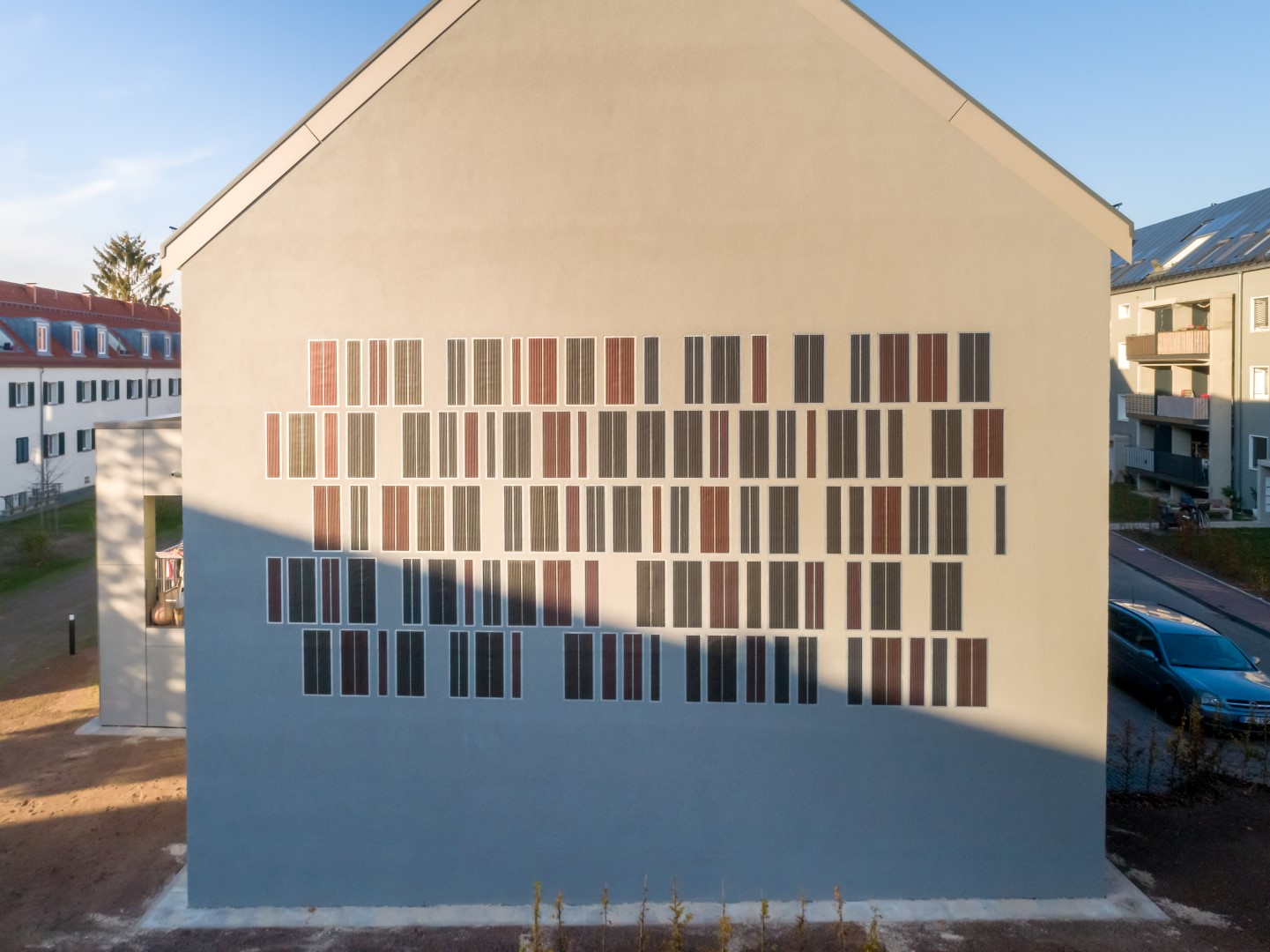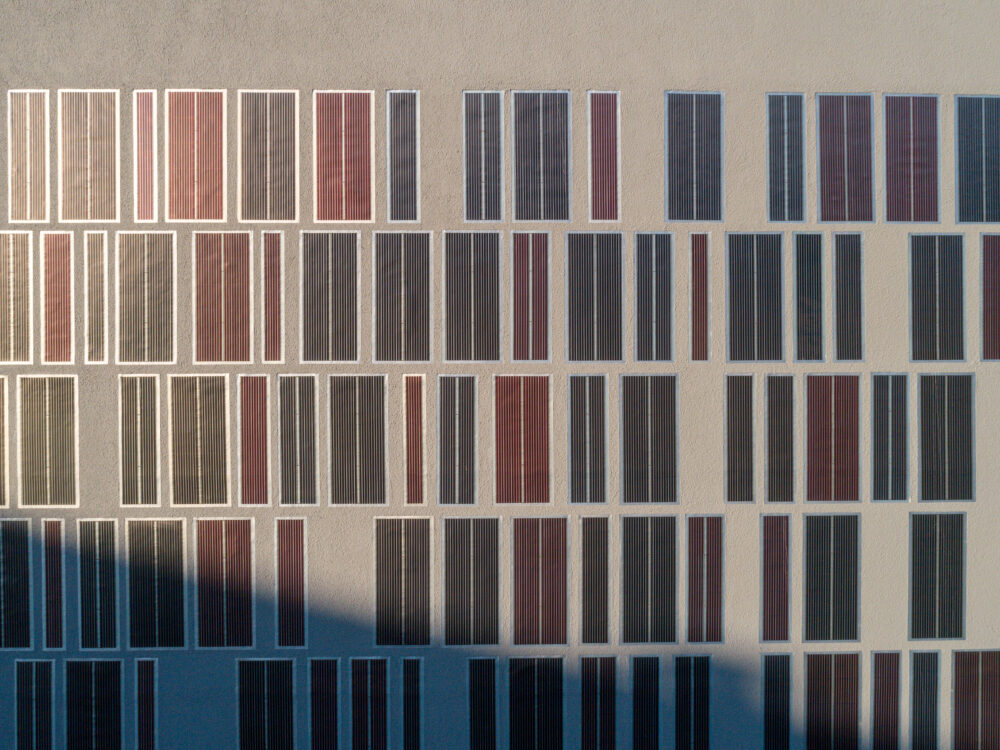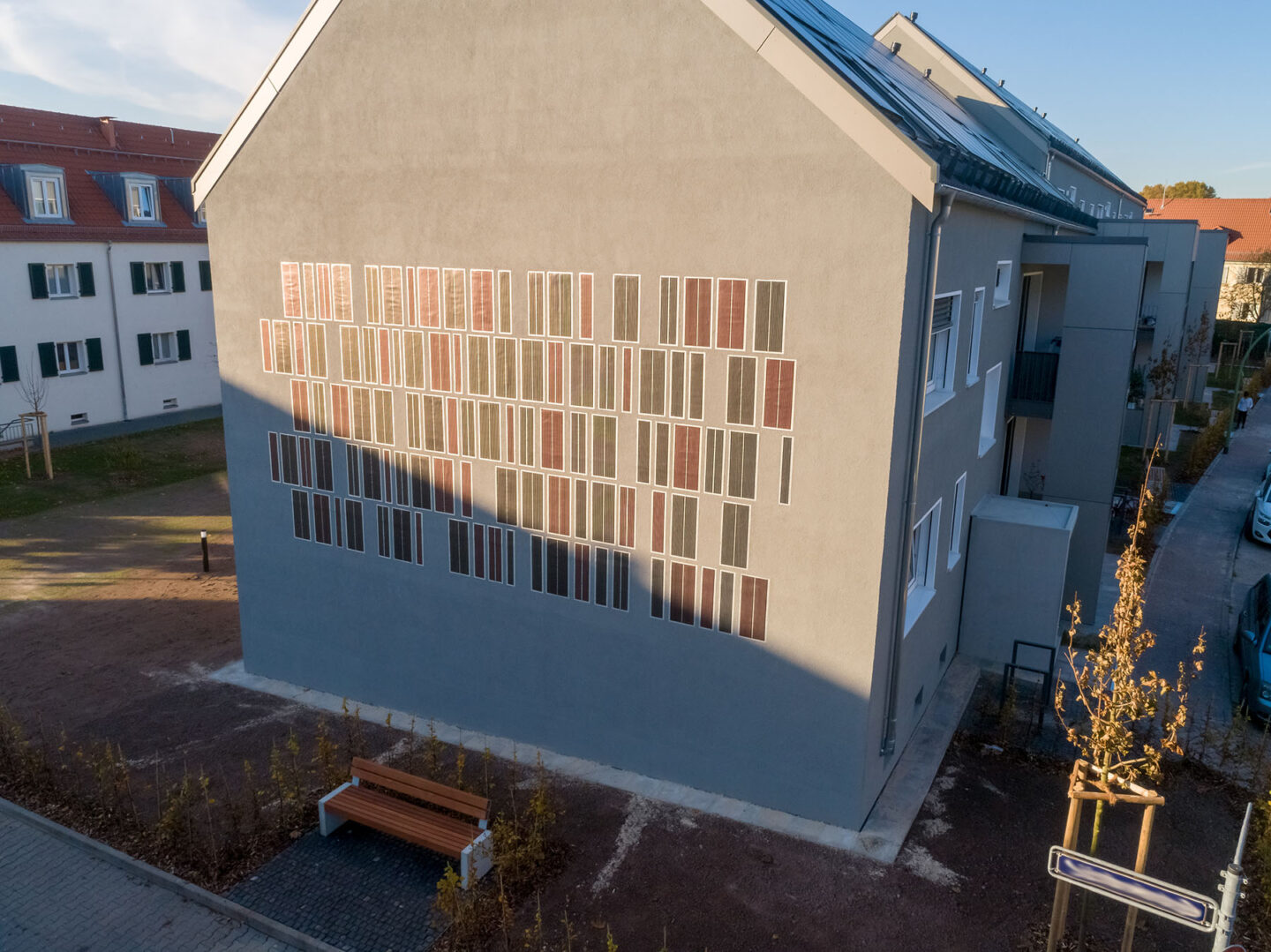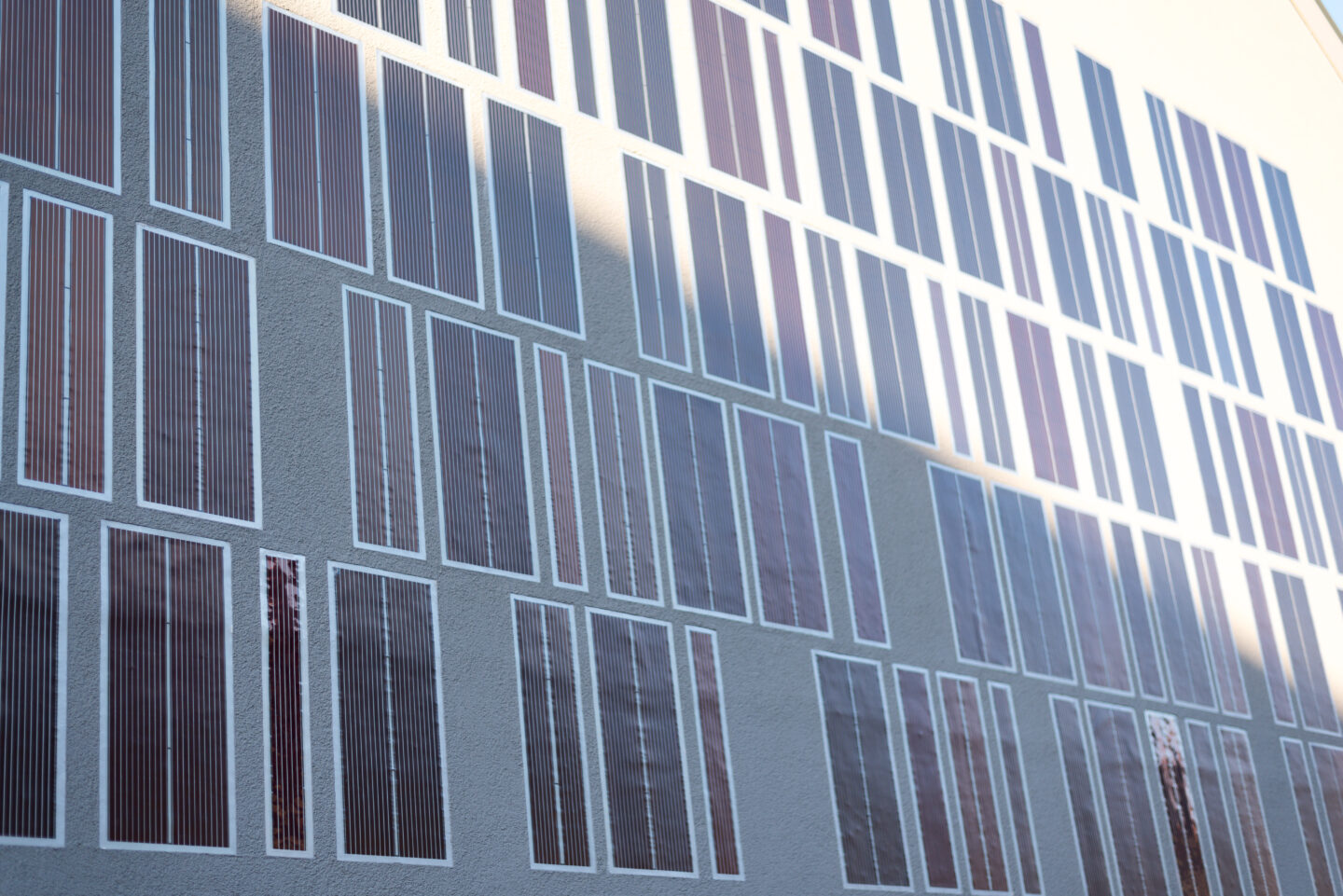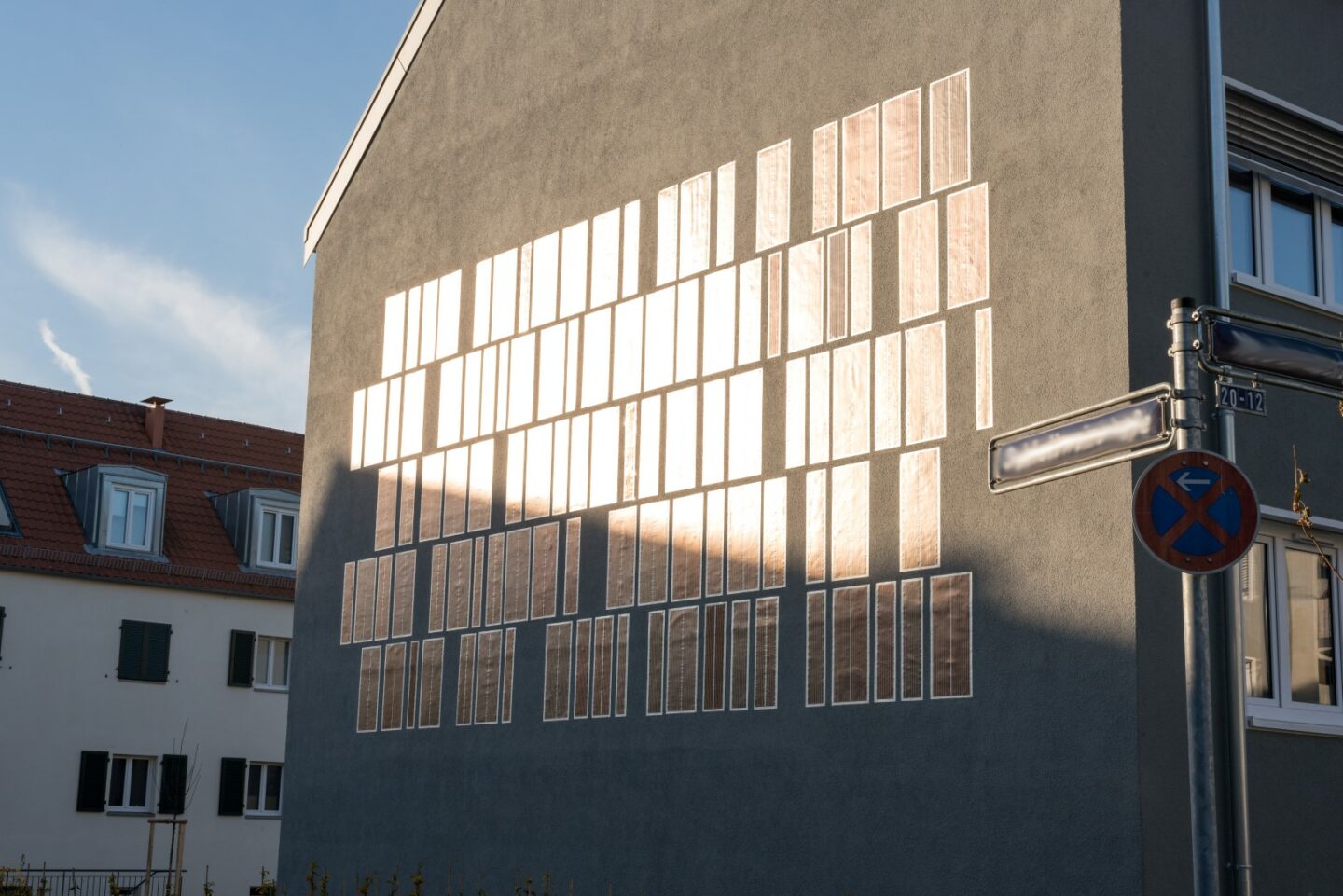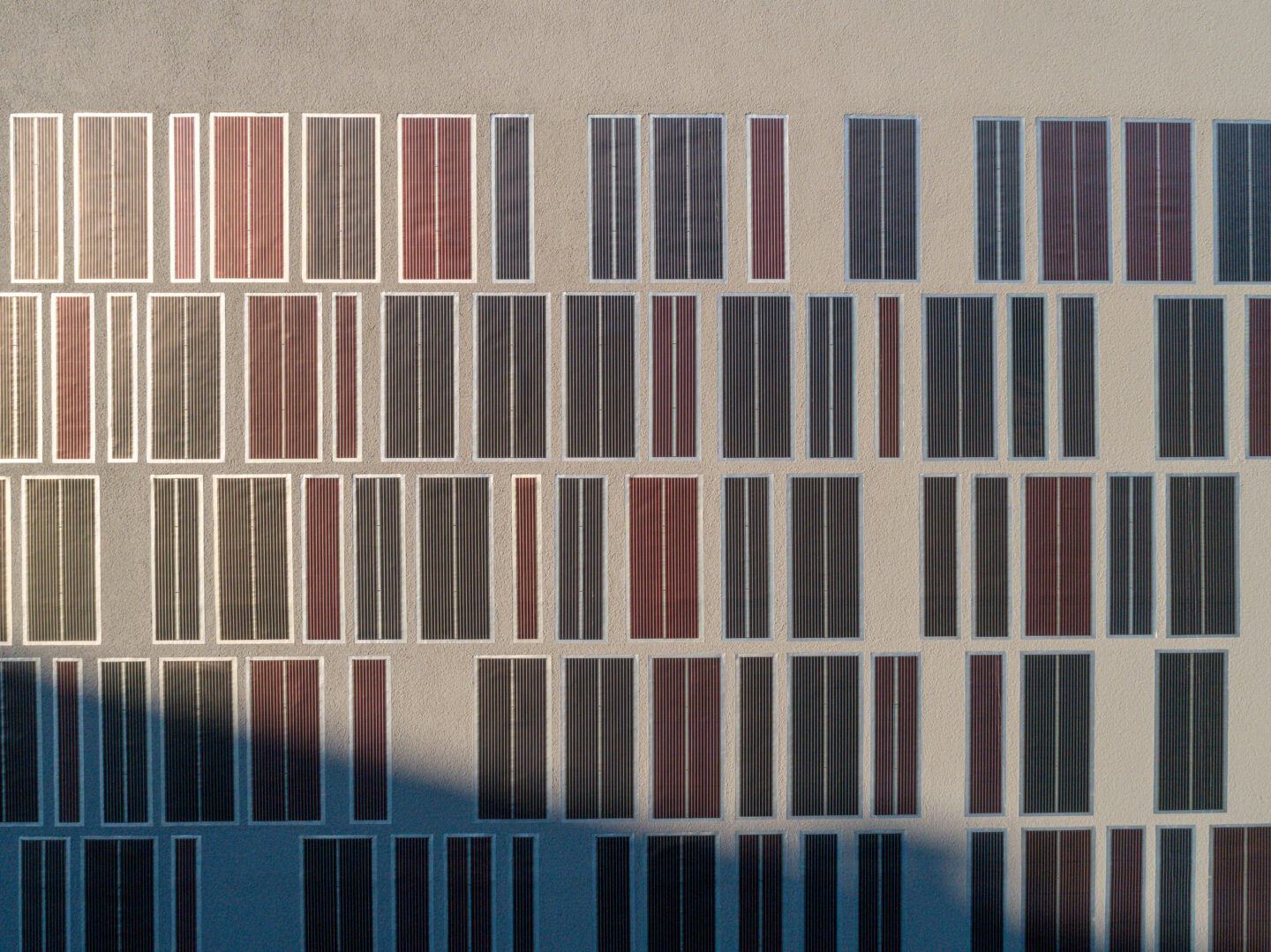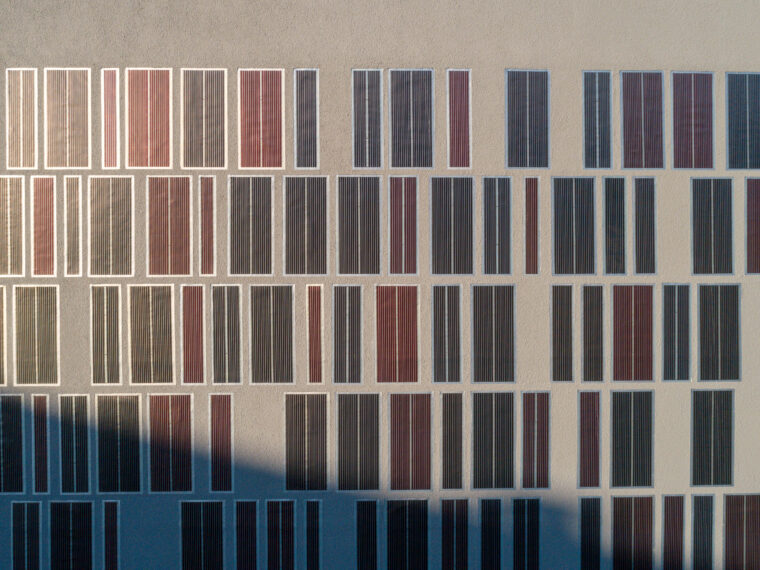Dec 2018 - Frankfurt, Germany
The first thermal insulation composite system with integrated photovoltaics
CLIENT
DAW SE
FEATURES
Integration: ASCA modules integrated in a composite thermal insulation system
Number of modules: More than 150 modules (2 shapes and 2 colors)
